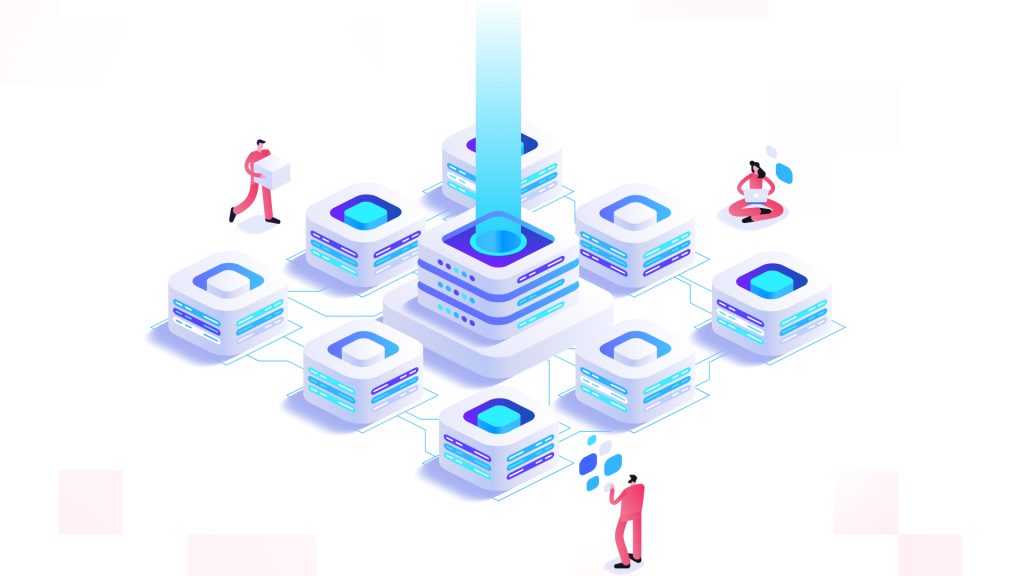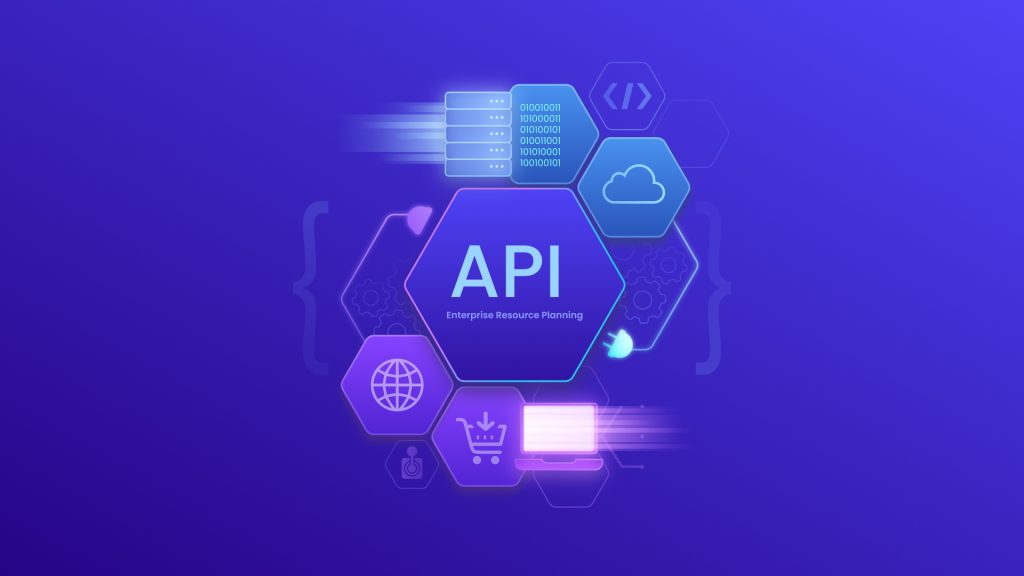Global Building the Ultimate CRM: Why API-First Solutions Are a Game-Changer for Ecommerce Brands

So, here you are—probably frustrated with your current eCommerce setup. Maybe your app crashes the minute a sale goes live. Maybe your CMS and CRM are in a cold war and refuse to speak to each other. Or maybe launching on a new platform just feels like reinventing the wheel every single time. That’s why Building the Ultimate CRM isn’t just a luxury—it’s a necessity. A well-integrated, custom-built CRM can bring all your tools into harmony, streamline operations, and finally give you the control and flexibility your business needs to grow without the constant tech headaches.
Here’s the thing: these glitches ought to prick your senses because they are manifestations of much deeper-rooted causes. Probably, your tech stack traces back to those monolithic architectures that are really outdated and can hardly live in the present age that runs fast dollars through multi-channels. And that’s where API‑First development comes into play. No, it’s not some shiny new buzzword. It’s actually a smarter, more flexible way to build your eCommerce setup, one that keeps up with the chaos instead of collapsing under it. Let’s unpack it a bit, yeah?
If Your Stack Feels Like It’s Held Together with Duct Tap

Look, if your team is constantly scrambling to add plugins here, patching bugs there, or juggling tools that just don’t play nice with each other, it’s not a team issue. It’s an architecture issue. And honestly? It’s exhausting.
API‑First changes to that. It lets you break things down into modular parts, so you’re not stuck rebuilding the whole thing every time your business shifts. Want to scale? Add features? Test a new channel? You can do all that without the usual growing pains.
Wait, What Is API-First?
Alright, let’s steer clear of tech jargon. An API (or Application Programming Interface) is basically a translation. It enables one system to speak to another without having to worry about the inner mechanisms of how each system works. Imagine ordering food at a restaurant: you converse with the waiter (the API), not the chef. You don’t need to know how the kitchen operates. You just place your order, and boom it happens.
Now, traditional eCommerce platforms? They usually put the user interface first and then slap some APIs as an afterthought. So, every time you want to connect to, say, a CRM or a third-party app, it’s this clunky add-on that might work or might totally break your site.
API‑First flips that. It starts with the idea that everything, products, payments, inventory, you name it, should be able to talk to other systems, easily. So, you build those APIs first, not later. They become the foundation, not just the add-on.
The result? A clean, modular setup where your website, app, point-of-sale system, even third-party tools can all plug into the same backend without drama.
Need a Reliable CRM Development partner to help grow your Business?
Our Experts Can Help!
Why This Approach Actually Matters Now
Let’s be real online shopping isn’t a straight line anymore. Someone might see your product on TikTok, compare prices on a laptop, then check it out on their phone later that night. Your system needs to keep up with that kind of chaos.
And traditional platforms? They’re just not built for it. But an API‑First setup? Totally different story. It gives you the kind of flexibility where you can:
Go headless
Build sleek, custom experiences across web, mobile, or even wearables while your backend stays rock-solid.
Integrate in a snap
Want to plug in a new CRM, ERP, or maybe an analytics tool or the payment gateway? Go ahead without having to tear the whole system down.
Scale like a boss
Big market launches, feature implementation, or opening a new sales channel and everything breaks.
In short, you’re no longer building a rigid, one-size-fits-all website. You’re creating a flexible setup that adapts and grows with your business and changes with your customers.
And honestly? That is what the new-age eCommerce ecosystem demands.
How the Big Players Stay Ahead with API-First (and Why It’s Not Just for the Amazons of the World)
Let’s be real Amazon and Shopify didn’t end up dominating the eCommerce game by winging it. Nope, they built smart from the start, and API-First thinking has been at the heart of their growth from day one.
Take Amazon, for example. That whole “shop with your voice using Alexa” thing? Yeah, it works because APIs are quietly doing all the heavy lifting behind the scenes connecting voice commands to product info, orders, payments, and who-knows-what-else in real time.
Then there’s Shopify. Ever wondered how there are so many third-party apps in their ecosystem? It’s because their platform is super friendly to developers. Their APIs are open and well-structured, so folks can build all kinds of tools that plug in without causing chaos.
This kind of flexibility is what gives them their edge. They can try new ideas, move fast, partner up, and scale like crazy without everything falling apart.
So if your brand wants to move like that whether it’s through a slick mobile app, a headless store, or a seamless “buy anywhere” customer experience API-First isn’t just a nice-to-have. It’s your foundation.
Looking for a Partner in Your Ecommerce Development Journey?
Looking for more? We Can Help!
Why API-First Is More Than Just a Trend (And Yeah, It’s Kind of a Big Deal)

Based on what platforms like Shopware, Boundless Commerce, Commerce tools, and Tyk have shared, API-first isn’t just a fancy upgrade. It’s a complete mindset shift. It literally changes how your business builds, grows, and keeps up with everything tech throws at you.
Here’s what it actually does for you:
Omnichannel Without the Overwhelm
Your customers are everywhere. Your storefront should be too without you having to duplicate efforts for every single channel. With API-First, your website, app, Insta shop, smart fridge (why not?) They all tap into the same core logic. You’re not rebuilding. You’re just connecting smarter.
Customize Without Breaking Stuff
Ever had to kill a great marketing idea because your platform just couldn’t handle it? Yeah, frustrating. API-First opens that door. Want to drop in on a new loyalty program? Redesign checkout? Add a payment method your devs just discovered last night? Go for it. These changes become “plug it in and test it” moments, not “call in the whole team and pray it works.”
Ready for Whatever Comes Next
Tech changes fast. Voice shopping, AR, AI things move. And older systems? They usually freak out when asked to play nice with something new. API-First gives you a setup that’s flexible enough to roll with the punches. No vendor lock-ins. No painful migrations. Just room to grow.
Faster Launches, MVPs, and Experiments
Launching in a new country? Testing a feature with just a slice of your audience? You can do that without risking your whole operation. With an API-First model, you spin experiments fast, launch faster, and keep your core business running steady while you explore.
But Let’s Not Pretend It’s All Rainbows—Here’s What You Should Know
Most blogs love to hype up API-First without talking about the hard stuff. But let’s be honest: it’s not magic. It’s a powerful move, sure, but it also comes with a few realities you’ll want to be ready for.
It’s Not Exactly Plug-and-Play
You’re not just flipping a switch here. This kind of system has a lot of moving parts, and it takes some seriously smart people to plan and build it well. You’ll need skilled devs, solid architecture, and a team that’s ready to go all-in. Without that, you might end up with a tangled mess instead of the clean, scalable system you were hoping for.
The Upfront Costs Can Sting
This is an investment. Documentation, system integration testing, security setup, writing the APIs, none of them are free or quick. For smaller teams or startups, the cost might feel like a mountain to climb before you see a single penny back.
Governance Matters (A Lot)
Once your APIs are out in the wild, they need rules. Who can use them? How often? What happens when you update one? Without good governance, things can spiral fast. Think about security issues, inconsistent data, and lots of late-night panic debugging. Yeah, no thanks.
Don’t Overdo It
Here’s the trap: going too big, too soon. Not every business needs microservices or a full-on API-First rebuild. If your store’s small, and you’re mostly running a simple catalog with minimal integrations, you might be overengineering the whole thing. Be honest about what you actually need right now.
Okay, So What Does Building API-First Actually Look Like?
Cool buzzword, sure but how do you actually use API-First? Let’s strip it down to the basics. No fluff. No jargon. Just practical steps, inspired by real builds from Tyk and Commerce tools:
Map Out Your Core Functions
Before any code gets written, sit down and figure out what your store must do. Product catalog, search, cart, payments, logins, order tracking to get the idea. Each of these should become its own API endpoint, with clear roles and responsibilities.
Pick Your API “Language”
You have options here. REST is the go-to for many super stable and easy to use. If your front-end team wants tighter control over what data gets pulled, GraphQL might be a better fit. Choose based on what your team knows and what you’re building.
Get an API Gateway
Think of this as the air traffic control for all your API calls. Tools like Tyk, Kong, or AWS API Gateway help you manage who’s calling for what, when, and how often. They also protect you from spam, overloads, and security messes.
Break the Frontend-Free
Going “headless” just means your website or app doesn’t have to live in the same room as your backend anymore. You can use modern CMSs (like Strapi or Contentful) to handle content and connect everything through APIs. It’s cleaner, faster, and easier to update later.
Document Everything
No one wants to deal with undocumented APIs. Seriously. Use tools like Postman or Swagger Hub to create clear, interactive documentation. It’ll save your devs hours of confusion and back-and-forth.
Headless, MACH, and All That Jargon—Let’s Actually Talk About It
Okay, let’s just say it: the tech world loves buzzwords. MACH, headless, composable, microservices… sometimes it honestly feels like a game of who-can-sound-smarter.
But here’s the thing—they’re not just buzzwords. These are real deal shifts in how online stores are being built today. And yeah, they sound fancy, but at the core, they’re all about helping your eCommerce store move faster, scale smoother, and evolve without breaking everything in the process.
Wait, What Is MACH Anyway?
You might’ve seen the acronym floating around and thought, “Eh, I’ll Google it later.” So, let’s just break it down now.
MACH stands for:
- Microservices: Instead of one giant, clunky platform, everything like payments, inventory, or search is its own mini service. If one-part crashes, the rest can keep running. Handy, right?
- API-First: All those little services? They communicate with each other using APIs. No strange behind-the-scenes going on, just tidy, straightforward connections.
- Cloud-Native: Everything exists in the clouds. So, no more worrying about server problems or running out of space on your hosting configuration.
- Headless: Your frontend (what customers see) is totally separate from the backend (where all the logic and data sit). So, you can redesign the site’s look without touching the backend—and vice versa.
If you want a metaphor: traditional platforms are like a stiff tuxedo—you get what you get. MACH is more like a closet full of mix-and-match pieces you can tailor to any occasion.
Where This Stuff Actually Matters: B2C vs. B2B
So is MACH and API the right for your business? It depends on what you’re doing.
If You’re in B2C (Business to Consumer):
You’re probably focused on creating slick, fast, beautiful experiences for people browsing on their phones at 2 AM. You’ve got:
- Fancy frontends with a lot of visual polish
- Frequent updates, promos, and flash sales
- Personalized offers (hey there, “10% off just for you!” emails)
- Mobile-first + social commerce integrations
API-first is kind of your dream setup here. It lets you roll out updates fast, run campaigns across platforms, and fine-tune the user experience without tearing apart your whole system every time.
If You’re in B2B (Business to Business):
Completely different ballgame. Consider:
- Complicated checkout processes and bulk purchasing
- Several buyers on one account
- Tiered or contract pricing
- Heavy integrations with CRMs, ERPs, and all of the rest of the back-office nonsense
That is to say, it’s complicated. But the cool part? API-first handles messy. Tools like Shopware show how businesses can integrate deep features like reordering, real-time contract pricing, and custom quotes without having to rebuild from scratch.
Already Have a Site? Don’t Panic.
You don’t need to throw everything away and start over. That’s not realistic and honestly, that’s not the point. API-first can be rolled out gradually and with minimal chaos (if you do it right).
Here’s how most brands ease into it:
- Start Small Pick something low risk, like your product catalog or checkout, and decouple that first. Get your feet wet.
- Use Middleware to Bridge the Gap Tools like MuleSoft or even a lightweight custom API layer can help connect your old setup to the shiny new one, without breaking things.
- Test with Small Groups First. Maybe it’s just your internal team or a small segment of users. See how things perform before pushing wider.
- Get Everyone on the Same Page. This isn’t just an IT thing. Your marketing, CX, and ops teams are all going to benefit from faster rollouts, better data flow, and more flexibility. So bring them in early. If everyone’s aligned, the whole process gets a lot smoother—and the payoff is way bigger.
Still Debating It? Do the Fit Check.
Not sure if now’s the right time to go API-first? Ask yourself:
- Are you planning for omnichannel (web, mobile, voice, social)?
- Do you want to grow fast without constantly rewriting code?
- Is personalization at scale a top priority?
- Do you want smoother third-party integrations?
- Are your devs low-key cursing your current monolithic setup?
If you’re nodding along to three or more… it might be time to get serious about this transition.
Exploring Digital Transformation for Your Business
Our Experts Can Help!
So What’s the Real Payoff?
Look, no customer is ever going to say, “Wow, your MACH stack is impressive!” They won’t care what your API architecture looks like.
But they will notice when:
- Their cart syncs between devices like magic
- Product suggestions feel creepily relevant (in a good way)
- Checkout takes seconds, not minutes even during Black Friday chaos
- Delivery updates come through instantly
- The site just works—no matter the traffic or campaign
These aren’t just technical wins. These are brand moments. Trust builders. Conversion-makers. Loyalty boosters.
API-first isn’t some shiny tech trend. It’s the engine powering the experiences that turn casual browsers into repeat customers. And in today’s crowded, fast-moving eCommerce world? That’s the real advantage.
You’re not just building a store. You’re building something that can grow, pivot, and keep pace with whatever’s next.
 Shopify
Shopify










